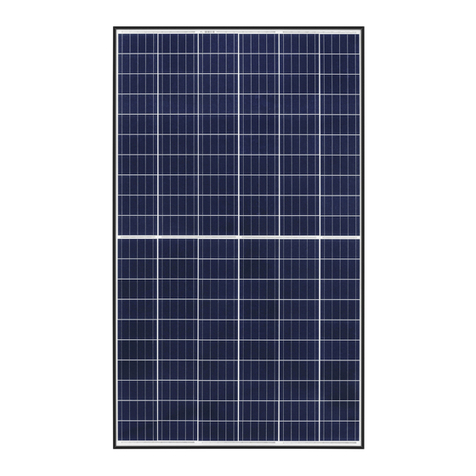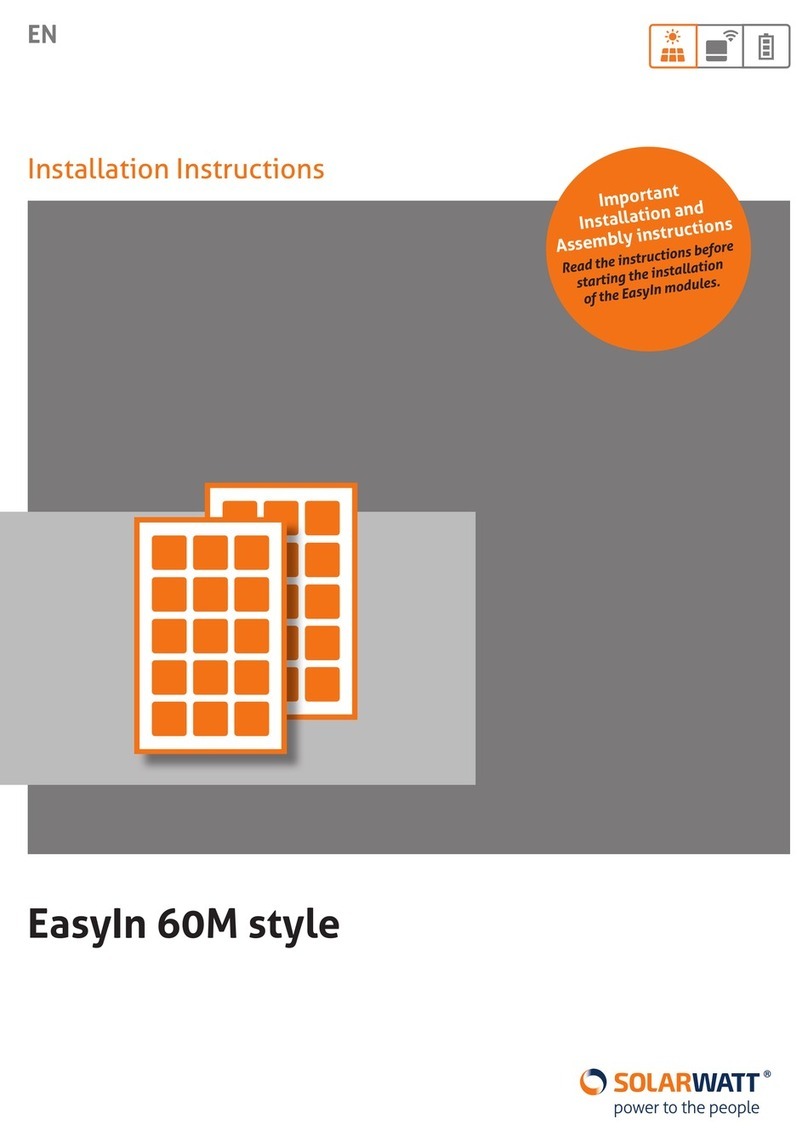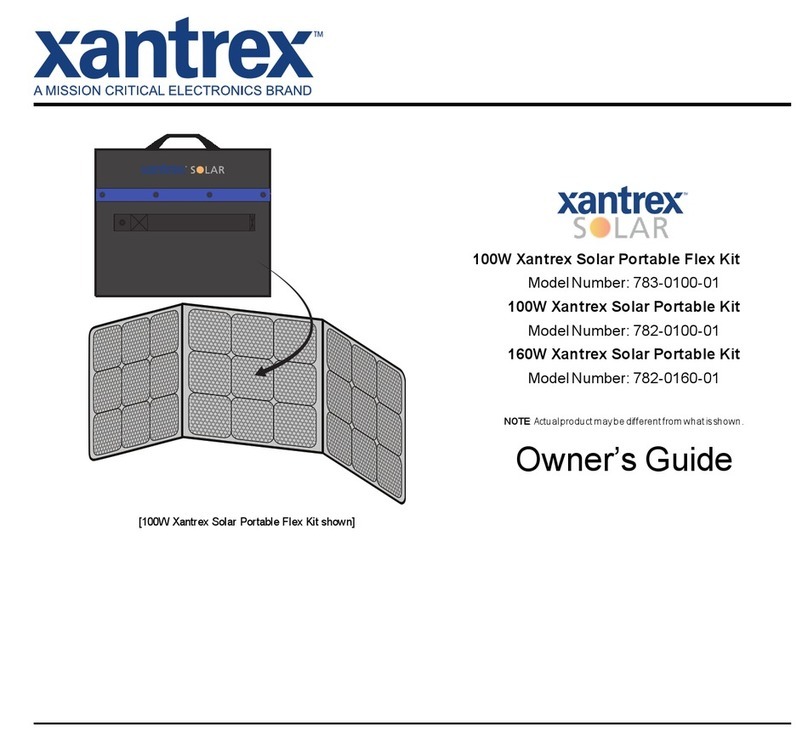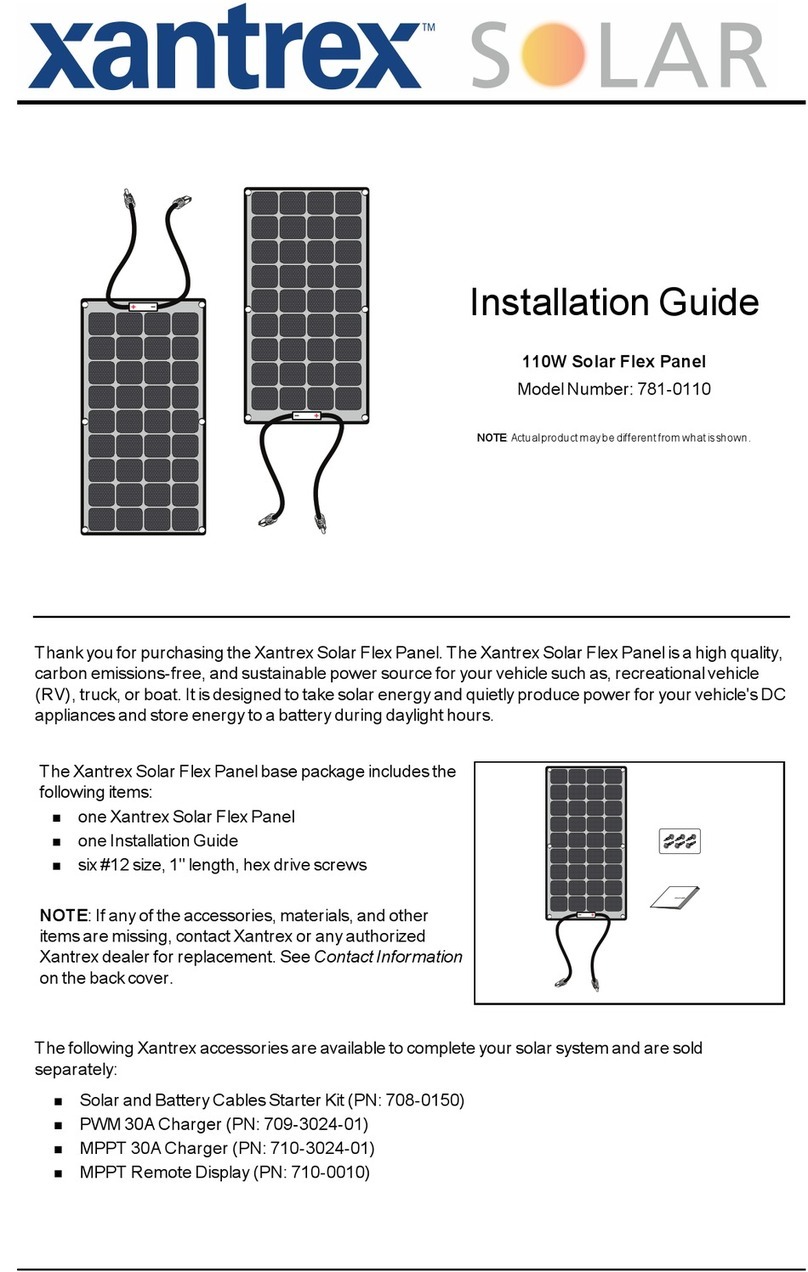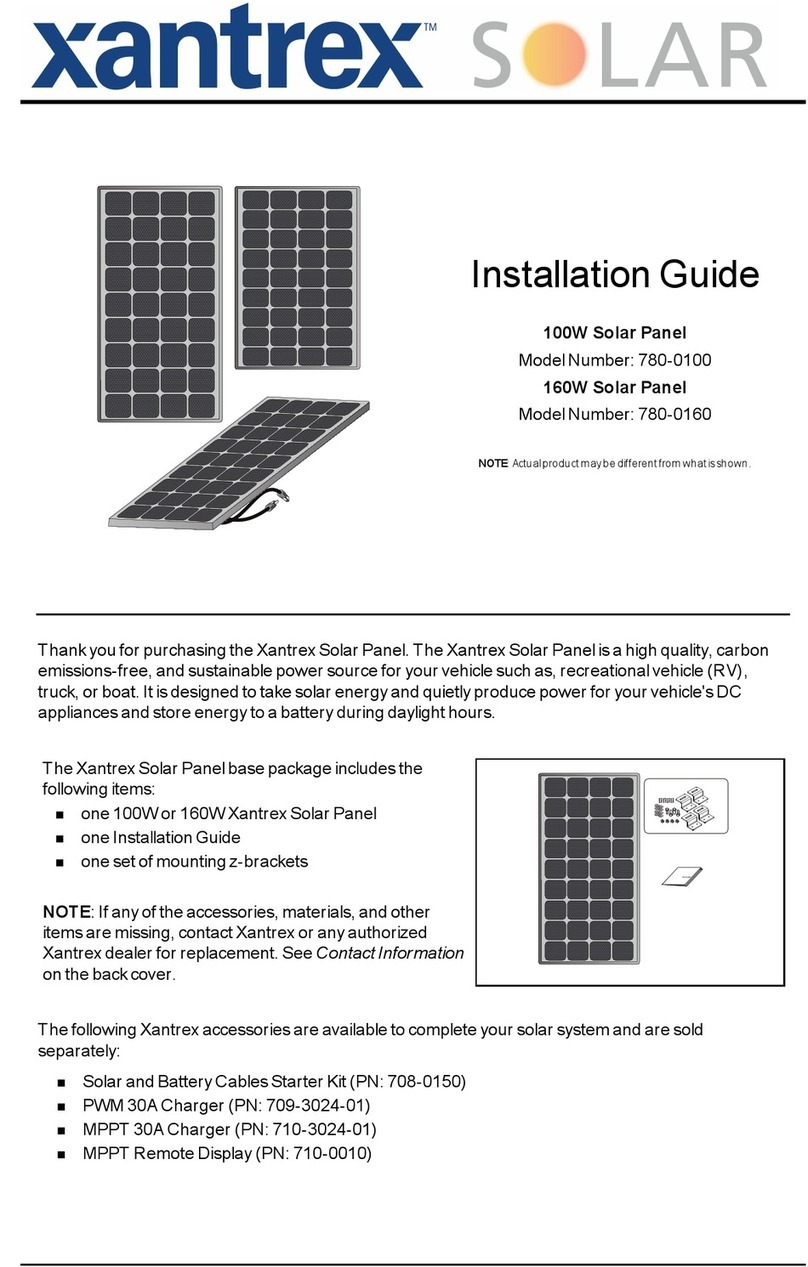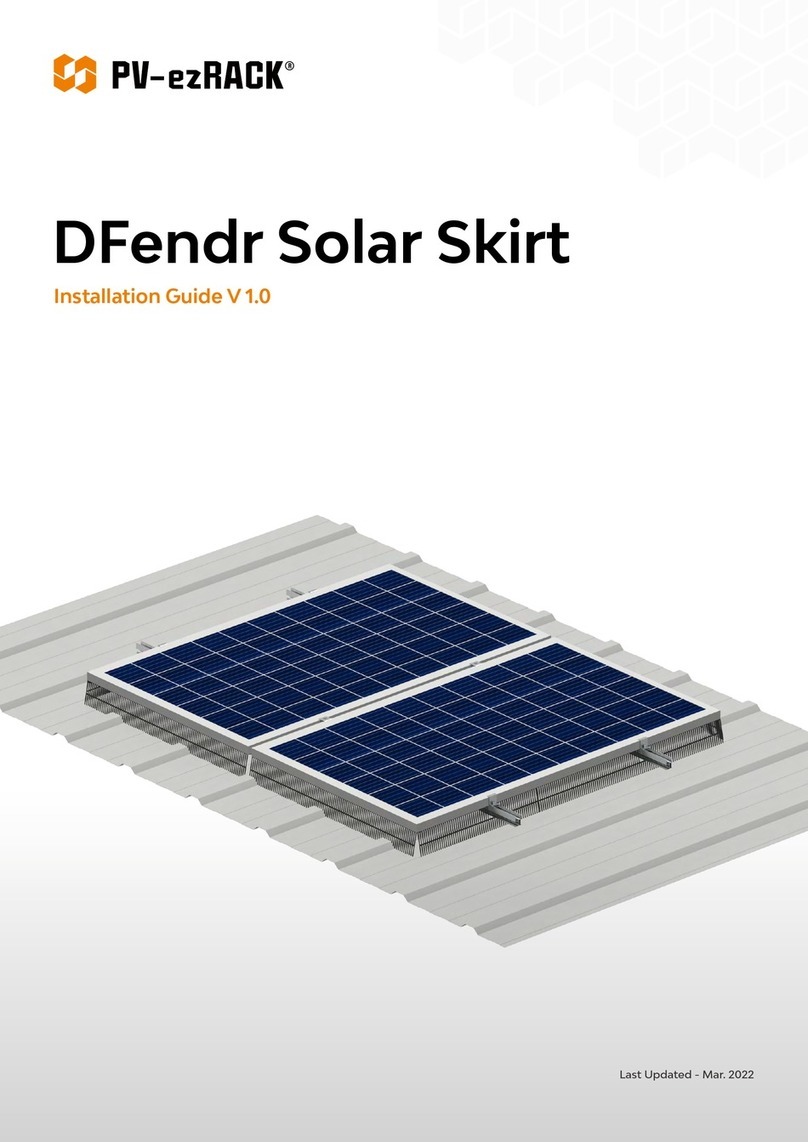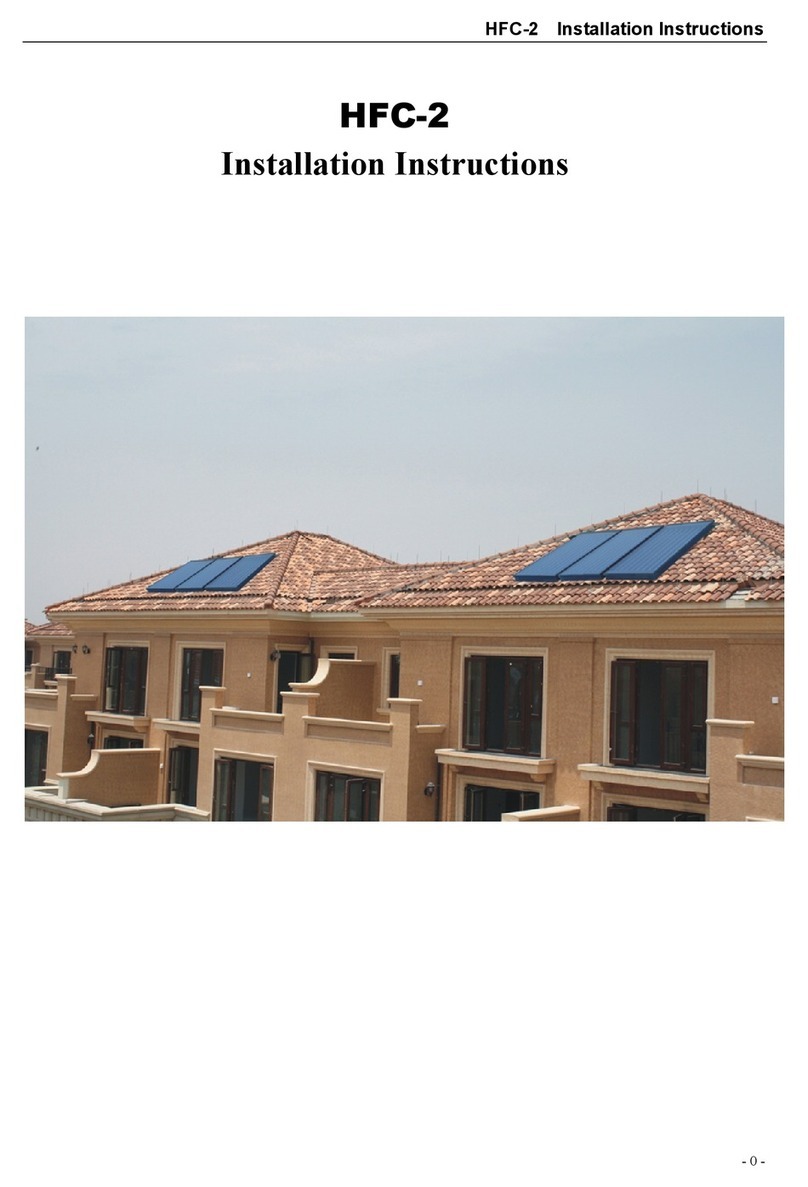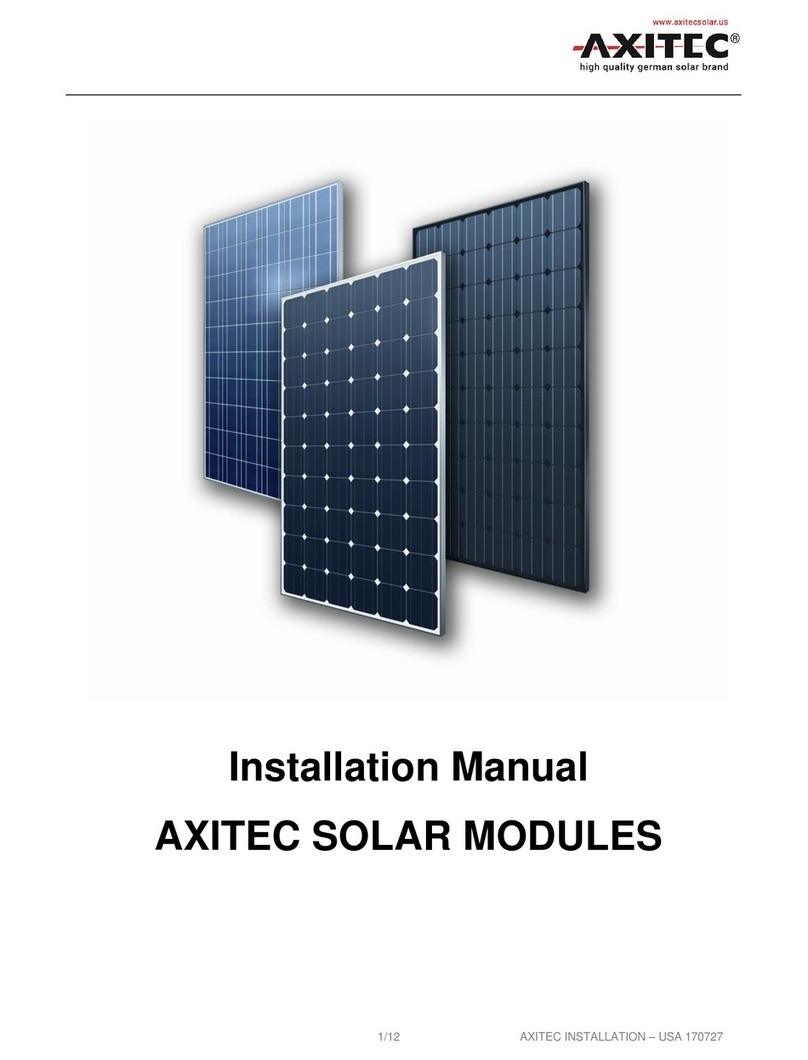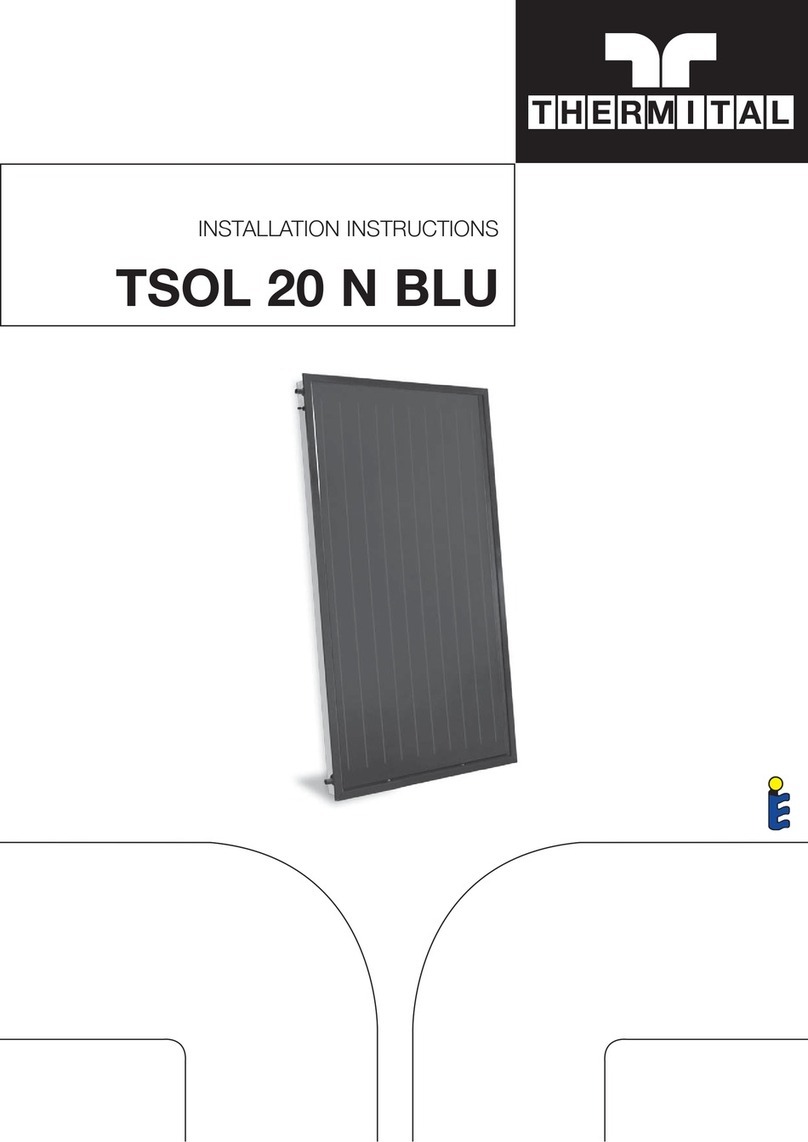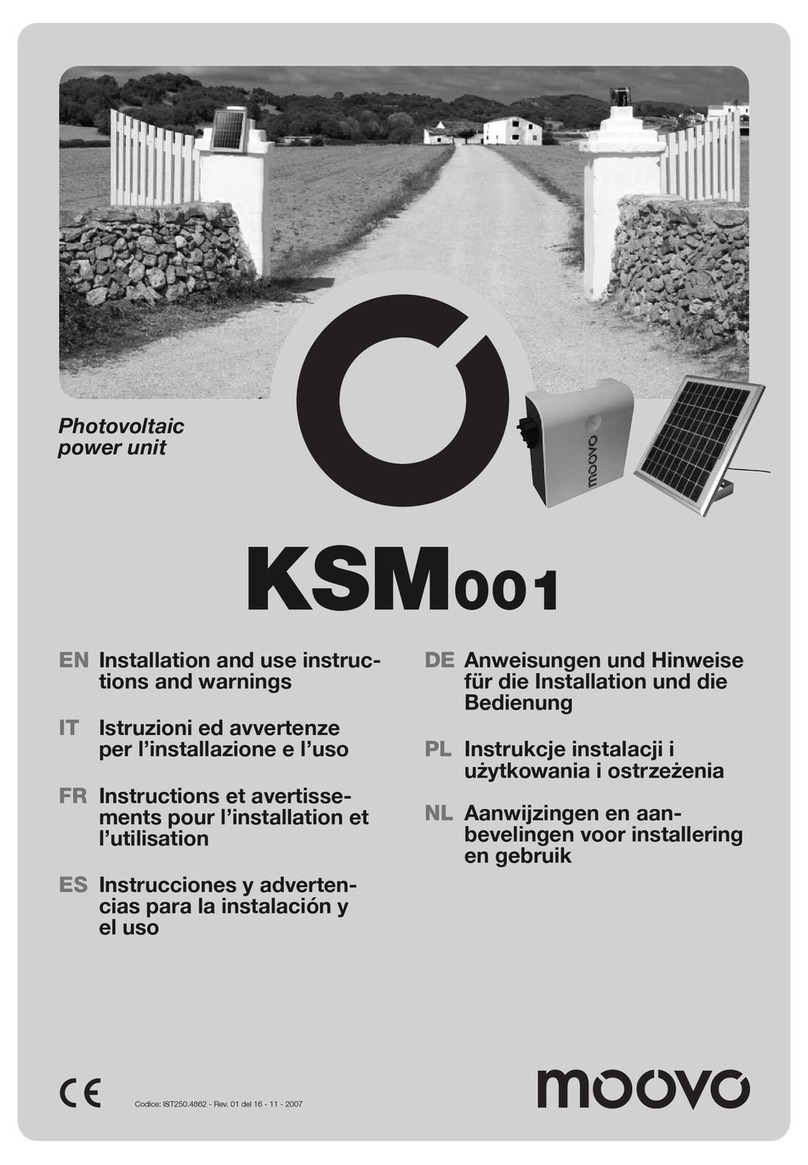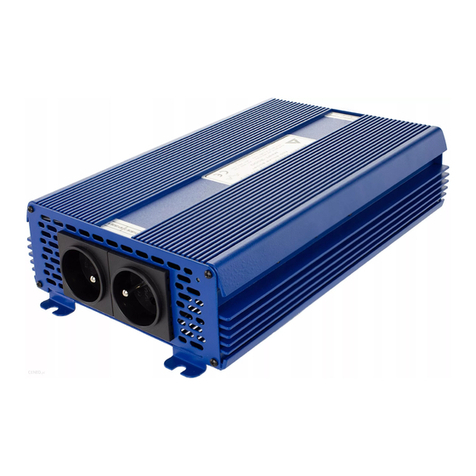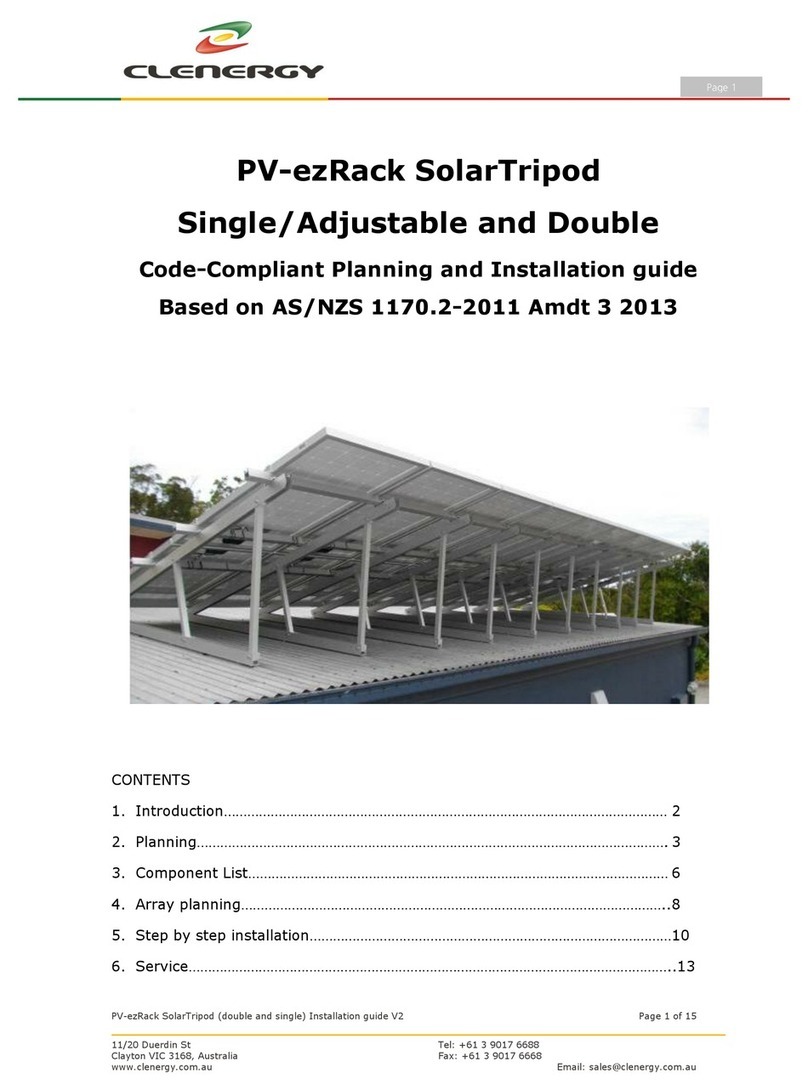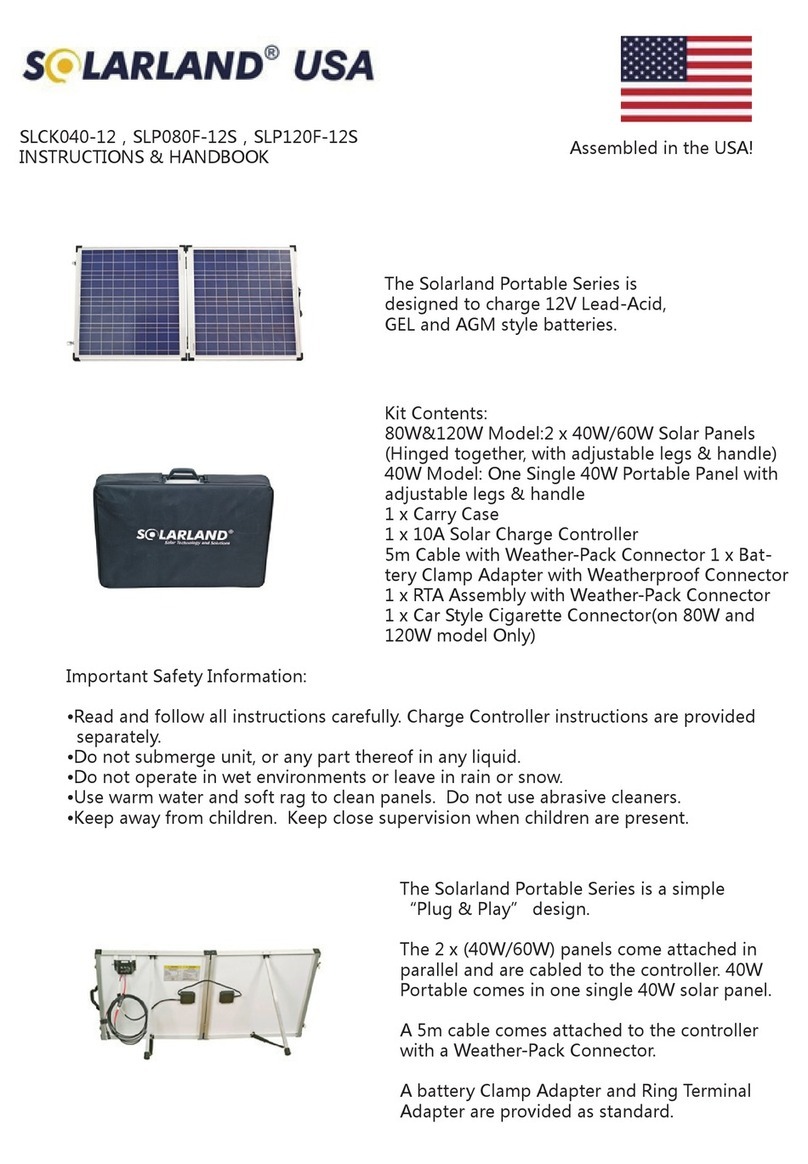
Safety Information
Important Information
READ AND SAVE THIS INSTALLATION GUIDE FOR FUTURE REFERENCE.
Read these instructions carefully and look at the equipment to become familiar with the device before
installing, operating, configuring, maintaining, and troubleshooting it. The following special messages
may appear throughout this documentation or on the equipment to warn of potential hazards or to call
attention to information that clarifies or simplifies a procedure.
The addition of either symbol to a “Danger” or “Warning” safety label indicates that an
electrical hazard exists which will result in personal injury if the instructions are not followed.
This is the safety alert symbol. It is used to alert you to potential personal injury hazards.
Obey all safety messages that follow this symbol to avoid possible injury or death.
Product Safety Information
cBefore using the 140W Solar Max Flex Panel Kit, read all instructions and cautionary markings
on the 140W Solar Max Flex Panel Kit's components, the batteries, and all appropriate
sections of this guide.
cUse of accessories not recommended or sold by the manufacturer may result in injury to
persons, a risk of electric shock, or a risk of fire.
cThe 140W Solar Max Flex Panel Kit is designed to be connected to your DC electrical systems.
The manufacturer recommends that all wiring be done by a certified PV technician or
electrician to ensure adherence to the local and national electrical codes applicable in your
jurisdiction.
cTo avoid a risk of fire and electric shock, make sure that existing wiring is in good condition and
that wire is not undersized. Do not operate the 140W Solar Max Flex Panel Kit with damaged or
substandard wiring.
cDo not operate the 140W Solar Max Flex Panel Kit if it has been damaged in any way.
cThis 140W Solar Max Flex Panel Kit does not have any user-serviceable parts. Do not
disassemble the 140W Solar Max Flex Panel Kit except where noted for connecting wiring and
cabling. See your warranty for instructions on obtaining service. Attempting to service the
140W Solar Max Flex Panel Kit yourself may result in a risk of electrical shock or fire.
cTo reduce the risk of electrical shock, disconnect the 140W Solar Max Flex Panel Kit from all
devices and or components before attempting any maintenance or cleaning on the 140W Solar
Max Flex Panel Kit.
cTo reduce the chance of short-circuits, always use insulated tools when installing or working
with this equipment.
cRemove personal metal items such as rings, bracelets, necklaces, and watches when working
with electrical equipment.
cDo not ground any PV conductors.
cDo not install the solar panel on top of a residential structure.
Copy right© 2023 X antrex LLC. All Rights Res erved. All trademarks are owned by Xantrex LLC and its affiliates .
Exclusion for Documentation
UNLE SS S PE CIFICA LLY A GRE ED TO IN WRITING,SE LLER
(A ) MAK ES NO WARRANTY AS TOTHE ACCURACY , SUFFICIENCY OR SUITABILITY OF A NY TECHNICAL OR OTHE R INFORMATION PROVIDED IN ITS MA NUA LS OR OTHER
DOCUMENTATION;
(B ) A SSUMES NO RES PONSIBILITY OR LIABILITY FOR LOS SES, DA MAGES ,COSTS OR EX P ENS ES, WHETHER SP ECIAL, DIRECT,INDIRECT,CONSE QUE NTIAL OR INCIDENTAL,
WHICH MIGHT A RIS E OUT OF THE US E OF SUCH INFORMATION. THE US E OF A NY S UCH INFORMA TION WILL B E ENTIRE LY A T THE US ER ’S RISK ;A ND
(C) RE MINDS Y OU THAT IF THIS MANUA L IS IN ANY LA NGUAGE OTHER THAN ENGLISH,A LTHOUGH STEPS HAV E BE EN TAK E N TOMAINTAIN THE A CCURA CY OF THE TRANS LATION,
THE A CCURACY CANNOT BE GUARA NTEE D. APPROVED CONTENT IS CONTAINED WITH THE E NGLIS H LA NGUAGE V ERS ION WHICH IS P OSTED AT http://www.xantrex.com.
NOTE:Visithttp://www.xantrex.c om ,click P roducts, select a Product category, select a Product,and s earch the Product Documents panel for a translation of the English guide, if available.
Contact Information
Telephone: +1-800-670-0707 / +1-408-987-6030 Web: http://www.xantrex.com
Email: customerservice@xantrex.com,
https://xantrex.com/support/get-customer-support/
2 975-1172-01-01 Rev A
August 2023
